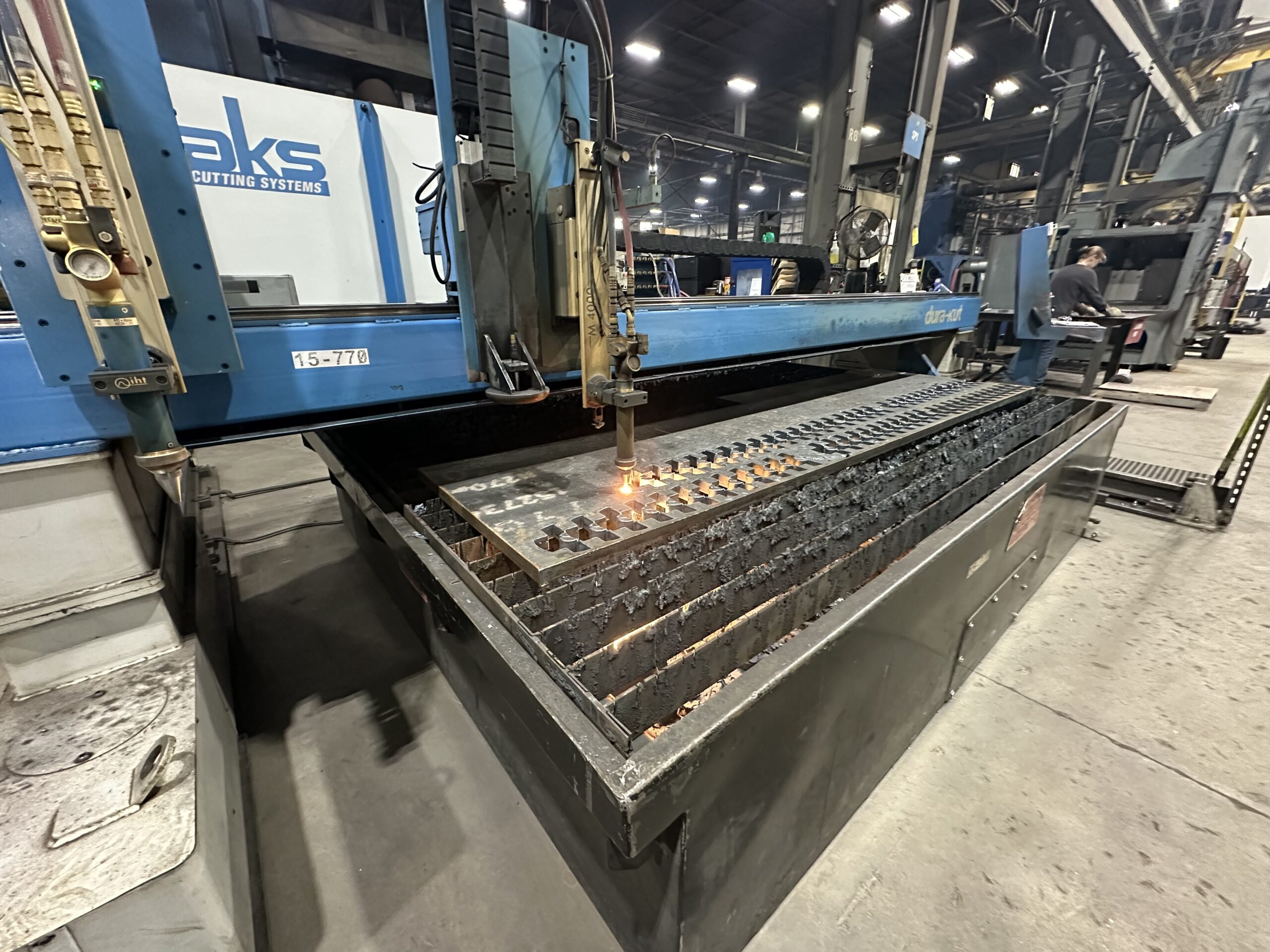Wondering How to Cut Titanium? Oxy-Fuel is Your Answer
Titanium is lightweight, strong, and highly resistant to corrosion, making it a popular choice for many fabrication projects. However, cutting it efficiently can be a challenge for fabrication shops. Many cutting methods struggle with titanium’s high melting point and reactivity, which leads to issues like excessive tool wear, warping, or slow processing speeds. If you’re struggling with how to cut titanium, oxy-fuel cutting may be the answer.
A CNC oxy-fuel torch is a powerful tool for cutting titanium and other metals. The process involves using a mixture of oxygen fuel and gas (usually acetylene or propane) to generate a high-temperature flame that burns the material in an exothermic reaction. This reaction allows it to cut thicker materials than other thermal processes.
Benefits of Using Oxy-Fuel Torches to Cut Titanium
Precise Cuts
One of the major advantages of using a CNC oxy-fuel torch is the precision it offers. The CNC machine allows for extremely precise cuts within one or two degrees of perpendicular, which can be especially useful when working with complex shapes or tight tolerances. Additionally, CNC cutting torches are able to make cuts that are much straighter and more accurate than those made by hand.
Greater Efficiency
Another advantage of using a CNC oxy-fuel torch is the speed at which it can cut through titanium. The high-temperature flame and precise movement of the torch can quickly melt through thick sections of the metal. In fact, an oxy-fuel torch cuts titanium 30-50% faster than mild steel. This can save a significant amount of time when working on large projects or when you need to quickly produce multiple parts.
Potential Oxy-Fuel Torch Disadvantages
Warping and Distortion
 One disadvantage of using a mechanized oxy-fuel torch is the potential for warping or distortion of the metal during the cutting process. The high-temperature flame can cause the metal to expand and contract, which can lead to warping or distortion if not properly controlled. This can be especially problematic when working with thin or delicate sections of titanium.
One disadvantage of using a mechanized oxy-fuel torch is the potential for warping or distortion of the metal during the cutting process. The high-temperature flame can cause the metal to expand and contract, which can lead to warping or distortion if not properly controlled. This can be especially problematic when working with thin or delicate sections of titanium.
Cost Considerations
Oxy-fuel torches are often less expensive than laser and plasma cutting systems. However, they can have higher long-term operational costs due to fuel consumption and maintenance. Oxy-fuel torches will be best for budget-conscious ships cutting thicker metals that don’t require extreme precision.
Tips for Cutting Titanium with Oxy-Fuel Torches
Tip Size
When cutting titanium with oxy-fuel torches, it’s important to use the correct tip size for the thickness of the titanium you’re cutting. A larger tip size will produce a wider flame, which is better for cutting thicker sections of the metal. However, it will also increase the material loss due to a larger kerf. A smaller tip size will produce a narrower flame, which is better for cutting thinner sections.
Fuel Gas
Make sure to use the appropriate fuel gas for the type of titanium you’re cutting. Acetylene is typically used for cutting titanium alloys, while propane is often used for cutting pure titanium.
Flow Match
Adjust the oxygen flow to match the fuel gas flow. The oxygen flow should be set slightly higher than the fuel gas flow to ensure a clean and efficient cut. The extra heat will help cut thicker material.
Preheat Flame
Use a preheated flame to heat the area around the cut line before starting the cut. This will help to prevent warping or distortion of the metal during the cutting process.
Have Questions About How to Cut Titanium? Reach out to AKS Cutting Systems
If you have questions about how to cut titanium, the AKS Cutting Systems team is happy to help. With over 100 years of experience in the cutting industry, AKS has developed extensive expertise in plasma-, waterjet-, and oxy-fuel cutting technology. Our team of professionals can provide valuable insights into how to cut titanium and offer guidance for your business.
Let’s Get Started
Want to hear more about what we can do for you? Reach out to our team for an initial consultation.
